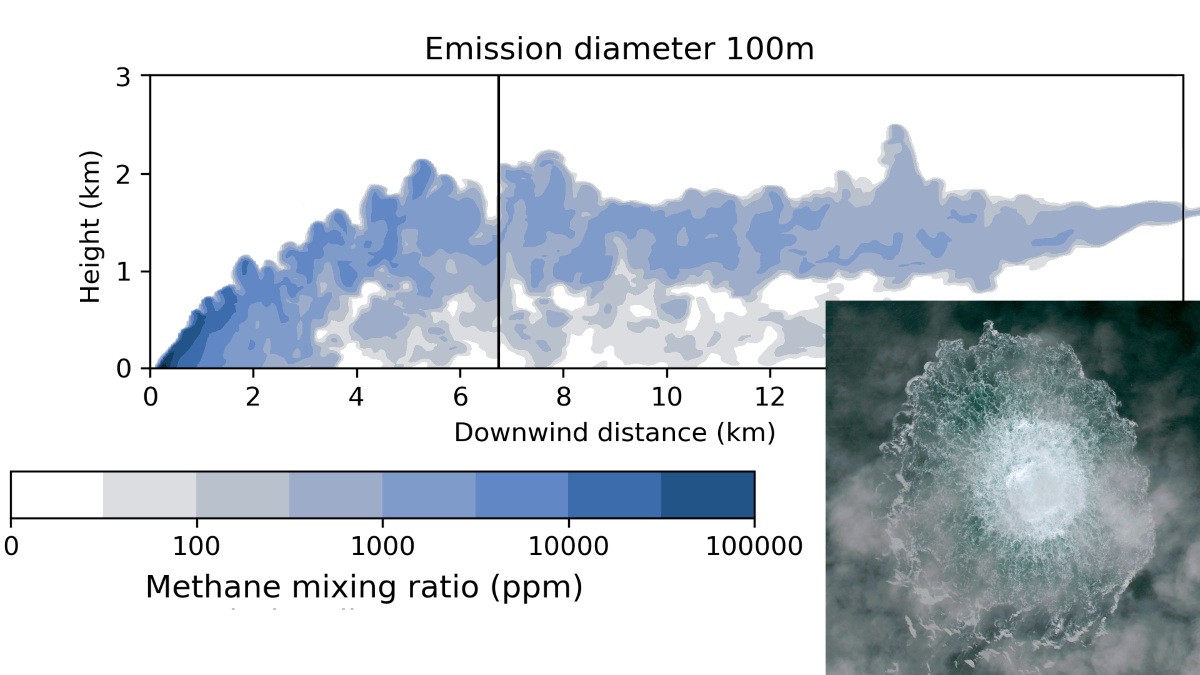New research analyzed the methane release from the Nord Stream gas leaks in 2022
 Rise of a methane plume simulated with UCLA-LES model, and a satellite image of the release. Satellite image: European Space Agency.
Rise of a methane plume simulated with UCLA-LES model, and a satellite image of the release. Satellite image: European Space Agency.By relying solely on publicly available information, researchers analyzed the methane release from the Nord Stream gas leaks in September 2022. Back-of-envelope calculations show it amounts to around 330 kt of methane in total. Being an outstanding amount for a single accident, the release hardly leads to any detectable consequences to the climate on a global scale.
Using basic physical considerations, we were able to infer the temporal evolution of the rate and the injection height for the release. The inventory specifies locations, vertical distributions, and temporal evolution of the methane sources. The inventory has been used to simulate the event with atmospheric transport model SILAM, and the simulations evaluated with a dataset from monitoring stations. The evaluations indicate rather high sensitivity of station observations to fine details of the release, which poses implications on the inversion of such types of sources from point measurements.
The paper is supplemented with a set of observational data tailored to evaluate the results of the simulated atmospheric dispersion, and results of the SILAM simulations performed with the inventory. The animation from one of the simulations of atmospheric dispersion can be found at https://doi.org/10.5446/1770.
Additional information:
Senior Researcher Rostislav Kouznetsov, Finnish Meteorological Institute, rostislav.kouznetsov@fmi.fi, p. 050 598 2580
The research article is available from: ACP - A bottom-up emission estimate for the 2022 Nord Stream gas leak: derivation, simulations, and evaluation (copernicus.org)
Kouznetsov, R., Hänninen, R., Uppstu, A., Kadantsev, E., Fatahi, Y., Prank, M., Kouznetsov, D., Noe, S. M., Junninen, H., and Sofiev, M.: A bottom-up emission estimate for the 2022 Nord Stream gas leak: derivation, simulations, and evaluation, Atmos. Chem. Phys., 24, 4675–4691, https://doi.org/10.5194/acp-24-4675-2024, 2024.